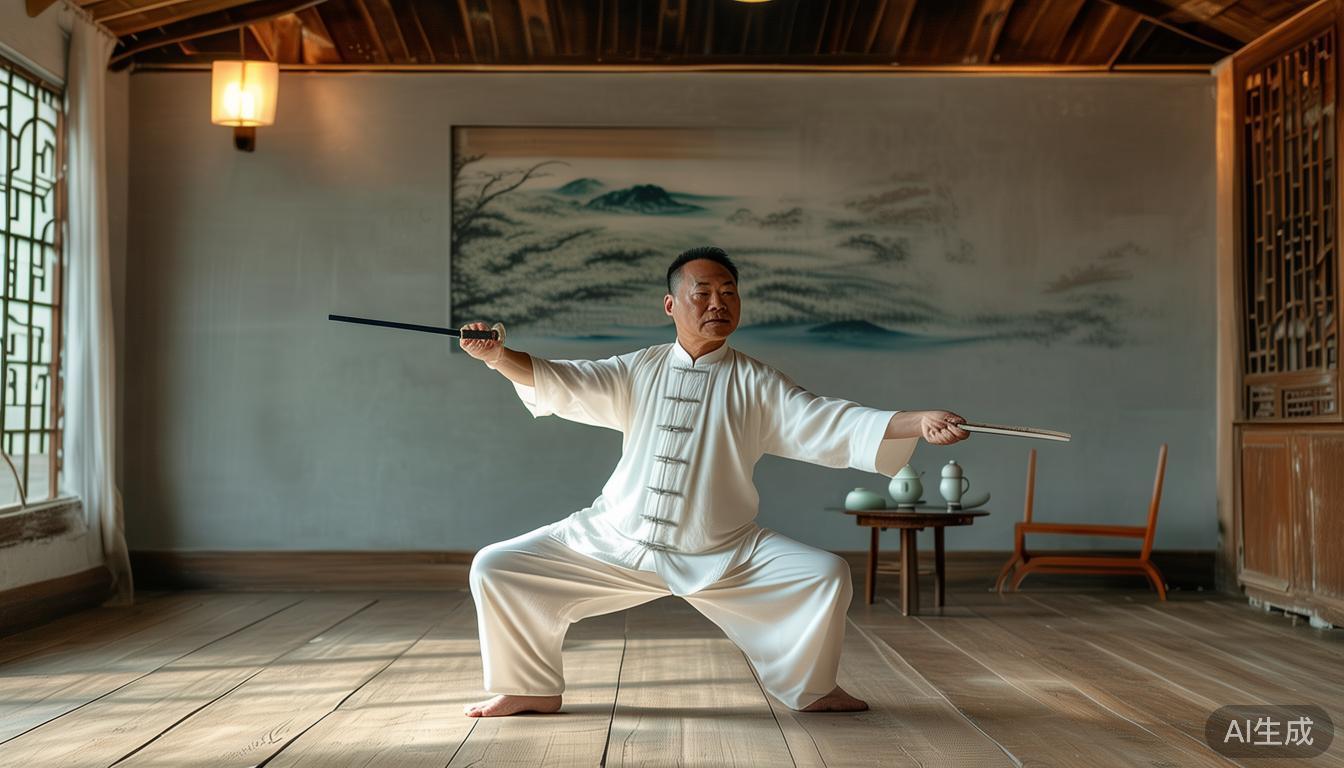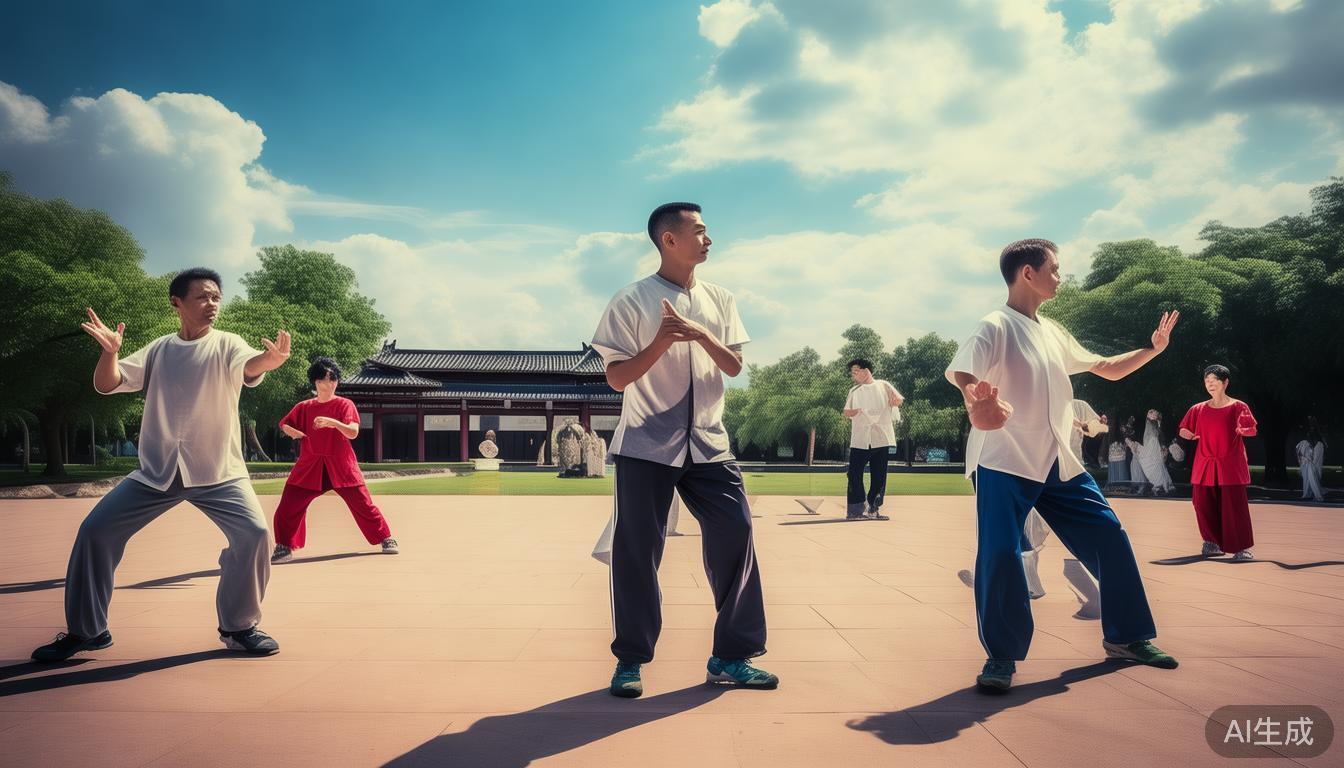There is a concept of internal martial arts called Tai Chi from the ancient times, which combines the body and mind by combining its movements with the slow and flowing smooth state, attracting a large number of people who are just beginning to learn. For those who have just started to get involved in Tai Chi, making appropriate routine choices plays a crucial role, which not only helps build a basic foundation, but also prevents the emergence of complex movements from causing contusions and blows. I have been practicing Tai Chi for more than a dozen years. I have a deep understanding of the significance and importance of laying a good foundation at the beginning of the beginning. I will share with the public some of my unique cognitive experiences and feelings. I hope to make smoother progress when novices take the correct approach to the path of getting started.
Which routine should be chosen for beginners of Tai Chi?
For those who are just starting to do this exercise, I usually recommend the simplified Tai Chi with twenty-four moves. This set of Tai Chi was created by the General Administration of Sports of China in 1956. Its purpose is specifically designed to promote and popularize Tai Chi movements. The number of movements is within a relatively appropriate range, and the difficulty it has is showing a gradual increase, which is similar to the traditional old man. Compared with the way, this Tai Chi with twenty-four moves has removed some repetitive movements and retained the core moves, such as classic styles such as "wild horse mane splitting" or "white crane wings to shine". When practicing, you must pay attention to the key points of the consistency between the movements. Don't be too deliberately and persistent in pursuing that too ideal perfect state. I remember that during the first time I went to study, the teacher often said, "The shape is similar to the three parts and the spirit is similar to the seven parts", which means that the appearance is generally in the correct state. The key is to carefully understand the inner rhythm of the movement.

How to correctly practice the basic movements of Tai Chi routines
The Tai Chi routine is based on the basic standing posture. It is recommended to take out ten minutes every day to practice the "Wuji Stance". Place the feet at the same distance as the width of the shoulders , and the knees are slightly curved. In the heart, imagine that a line on the top of the head gently lifts upwards, while at this point, relax your shoulders and then sink downwards. Such a body movement can help create the neutral feeling of the body. When starting to learn classical movements such as "cloud hand", it is necessary to pay special attention to the rotation of the waist and hips to drive the arms to perform corresponding movements, rather than just drawing circles with the arms. The common mistake is that the movement rhythm is too fast, resulting in the loss of the meaning and interest that Tai Chi should contain in the movement posture. It is recommended to practice in front of the mirror, or use the mobile phone to record and playback, so that the deviations in the action can be found more intuitively.
How to cooperate with breathing in Tai Chi routine practice
Gasping is the key to Tai Chi. However, people who are just starting to practice do not need to seek complete compatibility and breathe naturally. After the movement becomes proficient, try to use the principle of "inhale when opening, exhale when closing" – inhale when expanding the movement and exhale when withdrawing the movement. It’s like doing the “single whip” move. When the left hand spreads to the left, slowly inhale and exhale naturally when the action reaches the fixed pattern. You must avoid holding your breath, as it will cause your body to become stiff. Among the students I have taught, many of them will appear at the beginning because they pay too much attention to breathing, which makes the body movements appear very cramped. In fact, the situation is equivalent to singing. The artistic method must first focus on the memory of the lyrics and finally bring the emotional input from the heart to it. In this way, the subsequent expression will develop in a more natural direction.

What common mistakes should be avoided when practicing Tai Chi routines
The most common mistake is to pursue appearance but ignore the inner body. Tai Chi is not gymnastics. Every movement must have the awareness of "intention but not force". In addition, many people will have knees that exceed the toes at the beginning, which can easily cause damage to the knee joints. The correct posture should keep the direction of the knee and toes consistent. When the center of gravity moves, it should be smooth like sitting on a chair. In terms of clothing, it is recommended to wear flat and soft shoes to prevent practicing on smooth and smooth marble floors. There was once a student who fell while practicing boxing in hard-core leather shoes. He lost his steady state and slipped when he turned his body and turned his face in the opposite direction. Fortunately, he was very suitable to hold the earth layer surface ground when the time appeared.
After years of teaching, I found that all those who continue to practice Tai Chi have a similar point: they do not regard various techniques as fixed movements, but as a specific situation of emotional communication with their own hearts. I don’t know if you have encountered troubles, confusion, disturbances and interferences when you first started to start this practical sports. The situation is that you have encountered in the troubles, confusion, disturbances and interferences that are not coordinated and harmonious. The area within the comment area is welcome to share and talk about the presentation and reveal your own experience, experience, and perception. If you feel, feel, feel. If you feel, feel, feel. If you feel that the feeling, feeling, the impression has a valuable effect and effect, and the results are caused by the development of this value, the value of the chapter is that it has such value, effect, and consequences, then please click the thumb shape icon to give a thumbs up and praise, and confirm the action to express the action to encourage and support. The same is true. The same is true. We also agree to advocate and encourage and invite you to share and convey the content of this text and chapter to more numerous, large and large quantities. We have a large number of people and friends who are full of Tai Chi and have a deep and deep embrace. We have a deep and deep embrace. We have a deep and deep interest.


